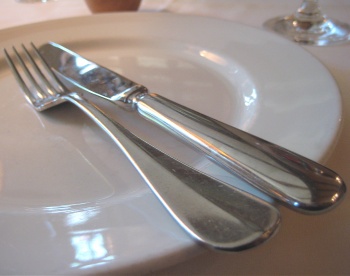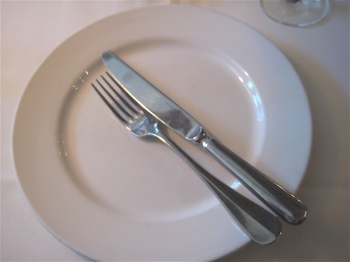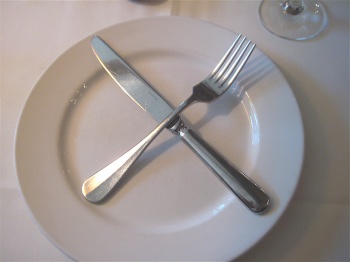 I've served dinner to thousands of people over the span of my adult life. In that time, I have been alarmed-- though seldom to the point of fits-- by the number of those people who do not know how to behave at table. Proper table etiquette is often poorly executed.
I've served dinner to thousands of people over the span of my adult life. In that time, I have been alarmed-- though seldom to the point of fits-- by the number of those people who do not know how to behave at table. Proper table etiquette is often poorly executed.
I don't mention this for reasons of stodginess, I mention it because I see what is happening at the tables of countless business dinners and first dates-- people trying to impress one another and failing miserably. On one end of the spectrum, there are the overly cautious-- those who navigate their dinner with extreme caution, eating their olives with knife and fork, for example. Then, of course, there is the other, cork-sniffing variety too hideous to mention this morning. Most people, fortunately, fall somewhere in between, but are sadly unclear on the finer and much more subtle points of dining. So I thought I might drop in from time to time and explain, as gently as I can, how you might avoid some of the most common pitfalls of eating in public.
Since my mood this week is decidedly morbid, I thought I would share with you the proper way of ending it all.
Finishing Your Meal
When one has had enough of whatever is placed in front of him, no pushing away of the plate is necessary, no handing your mess off to the first member of the wait staff who passes by, no verbal proclamations other than those that convey how lovely everything was, is necessary to let others know your condition.

